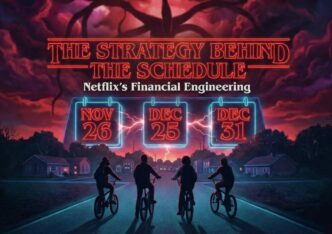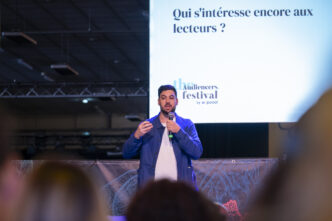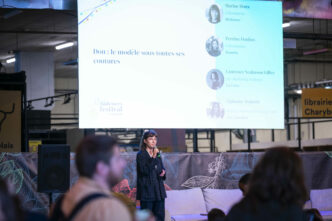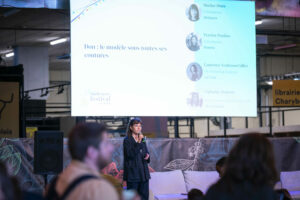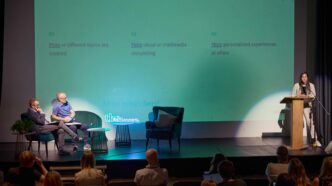
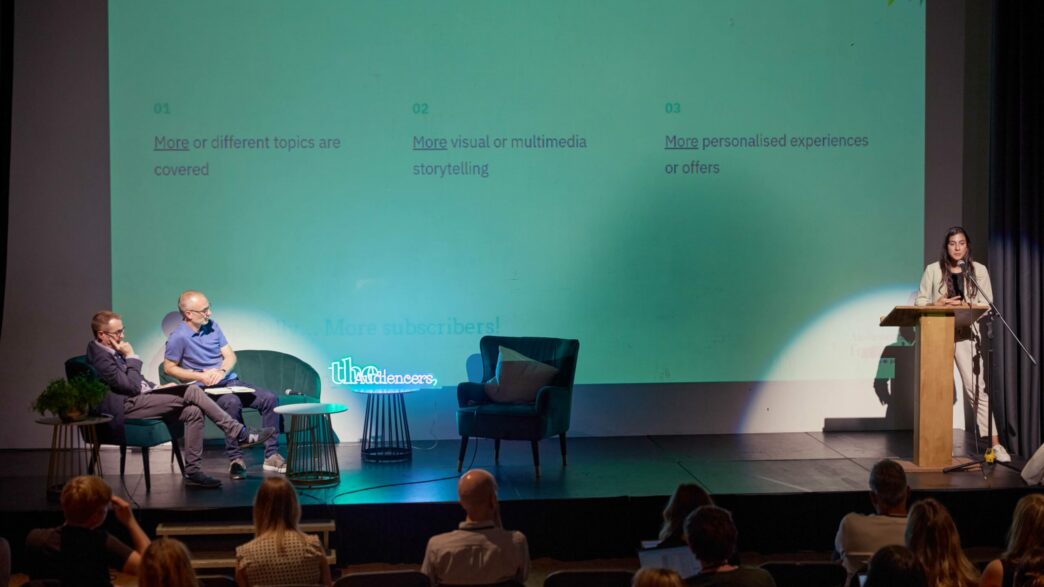
Recently, as part of The Audiencers’ Festival in London I gave a presentation during the session: ‘Where should AI come in when you’re on the quest for subscribers?’
To answer this question, I chose three examples from our recent work at FT Strategies, with publishers across the EMEA region. This work formed part of the AI Launchpad Programme, which we have now delivered to 48 publishers, sponsored by the Google News Initiative.
Firstly, some important context. Our industry is going through a discovery crisis. Generative search interfaces are becoming mainstream. In such an interface, such as Google AI Overviews, an LLM summarises sources to answer user queries, removing the need for a downstream click into a source. Referral rates to publishers’ websites are slowly but surely being eroded. That said, as we look for a collective solution, there are a number of ways to harness AI across the subscriber lifecycle.
At the FT, we think of the funnel in three key stages: Reach, Engage & Convert/Retain. First, top-of-funnel reach allows new audiences to discover your content. Next comes the crucial step of engaging those audiences and building habit, so that, finally, they are monetised and retained as paying customers.
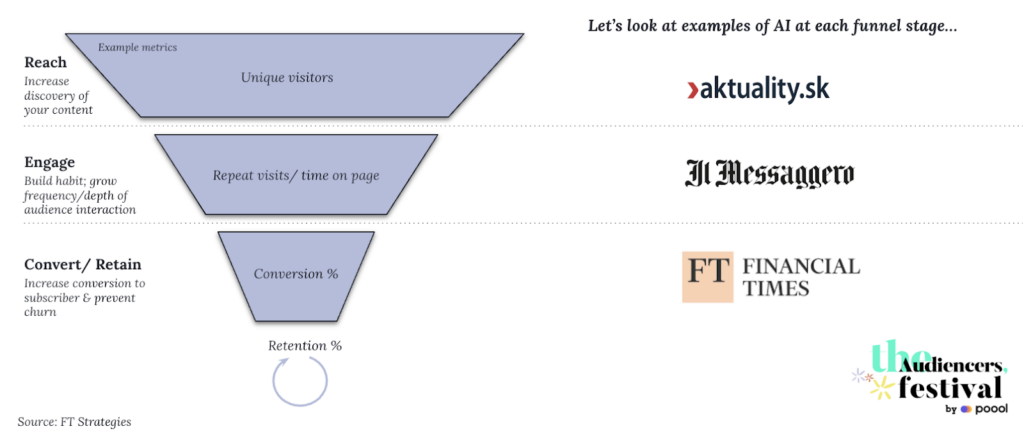
Today, publishers, big and small, are embedding AI in their process, innovating responsibly to deliver a better product to their audiences. Let’s look at what Aktuality (Slovakia), Il Messaggero (Italy) and the company I work for, the Financial Times (UK) are doing at each stage of the funnel.
Growing reach: Aktuality, a leading news site in Slovakia is testing a new travel-as-a-service writing assistant.
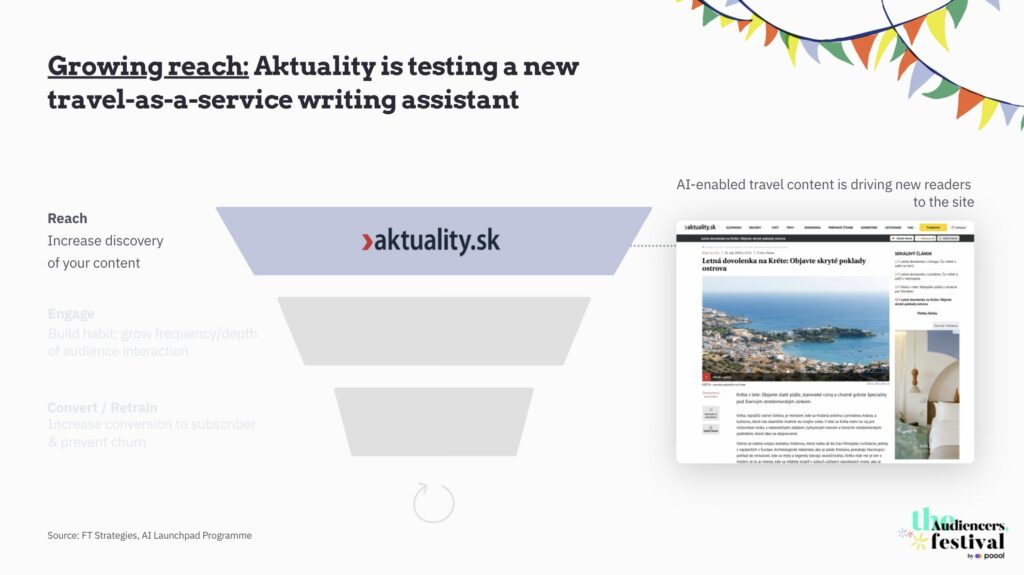
How it works: Aktuality, part of the Ringier Group, uses Palantir, and the solution was built using this interface. Journalists enter input variables such as country of origin, destination, season of travel, etc. into the prompt, which then generates the article section by section:
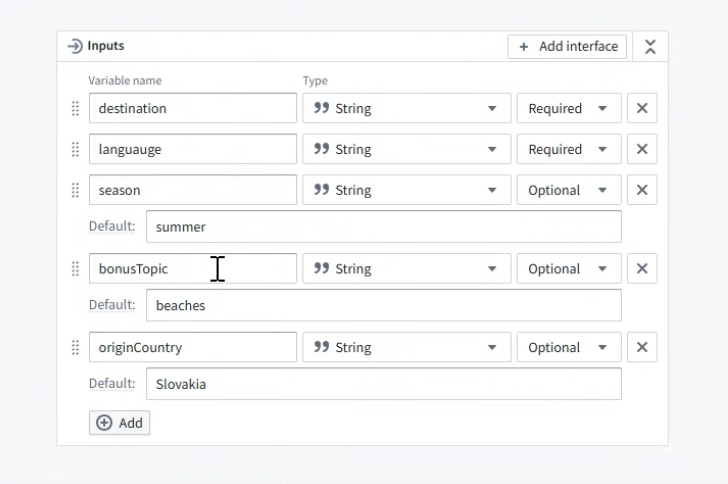
A ‘section by section’ approach was taken as this led to less hallucination. The resulting outputs are then copied into the CMS and formatted accordingly. Finally, elements such as SEO, titles and metatagging are added. Articles are then reviewed by editors and published.
The goal: This idea relates to top-of-funnel reach because travel was not an existing content vertical in the newsroom. Aktuality is better known for its investigative journalism. The hypothesis was that by creating new content, Aktuality could attract news audiences. The solution has only been live for a few weeks, but, if results continue to be promising, there are ambitions to continue the workflow for winter holiday destinations later in the year.
Growing engagement: Il Messaggero’s ‘Data Painter’

How it works: Il Messaggero, a leading national title in Rome, Italy, decided to build a tool to automatically create infographics. The journalist inputs data in the form of raw text. The data is then extracted from the text and individual components are generated based on this data. Then, a journalist is presented with several options and can choose the most relevant components to be used for the final infographic. The final infographic is then generated based on the journalist’s selection, and is exported for use in web and print.
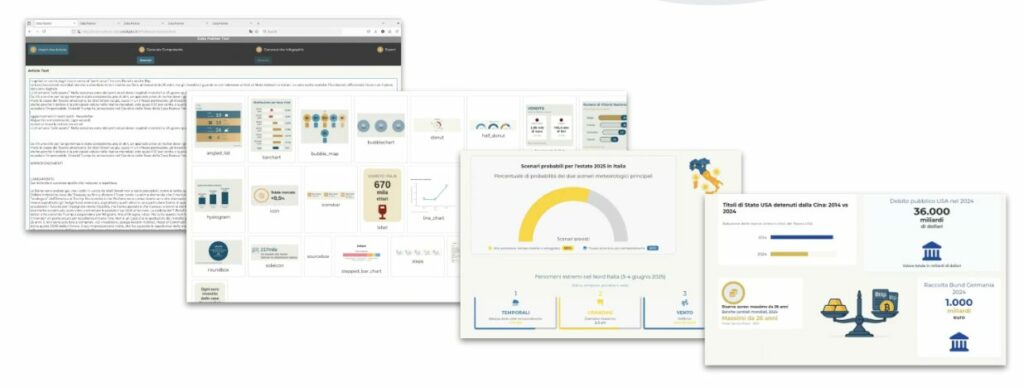
Getting the prompt right for this was a significant challenge, and side-by-side comparison showed that some models were far better suited to visual media than others.
The goal: This was a priority for the company as they currently outsource all creation of more complex data visualisation. This is both costly and time consuming. The hypothesis is that infographics will further engage subscribers, capturing their attention and providing a premium look-and-feel to the storytelling experience. The tool is still in beta but is now being rolled out to the full cohort of 18 web journalists to gather broader feedback and testing.
Boosting retention: The FT’s new winback journey
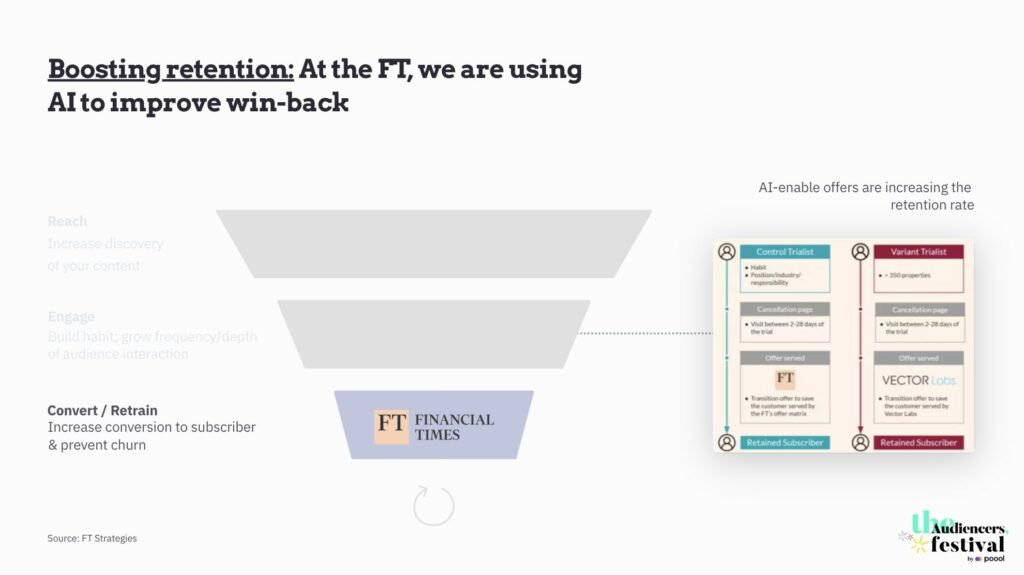
How it works: The FT’s Next Best Offer model uses over 350 inputs to serve a tailored offer to a triallist at the point of renewal. First, the FT’s product team agreed the data inputs, gathered and cleaned historical user data, such as engagement history, reading preferences, demographics, etc. They then co-developed a model with a third party, VectorLabs. A third party was brought in to advise on the development process and accelerate progress.
The model aims to predict which offer a customer is most likely to accept, optimising for lifetime value (LTV). Outputs were then reviewed by the FT’s data science and product teams and, finally, rolled out and A/B tested alongside the existing user journey.
The goal: The hypothesis was that existing reader data can be used better to prevent churn. While a similar logic can help throughout the subscriber lifecycle, the FT chose to focus on the point of trial renewal as a key moment to reduce churn. So far, A/B testing by our product team shows significantly higher save rates with the more tailored, AI-enabled retention journey.
What do all three of these examples have in common?
Abundance. While the AI narrative for news often focuses on scarcity and what we’ll lose, we can also look at it through the lens of abundance:
More or different topics can be covered by the newsroom
More visual or multimedia storytelling is now possible
More personalised experiences and offers are becoming the norm
… and hopefully more subscribers!
Indeed, while growing subscriptions has long been a focus, another important part of my work at FT Strategies is in content strategy. In a world where content is increasingly commoditised, I enjoy working with clients around the world to address this challenge. At its core, it’s about who can define their voice amongst all the possibilities of more content, more formats and more ways of delivering content to audiences.

